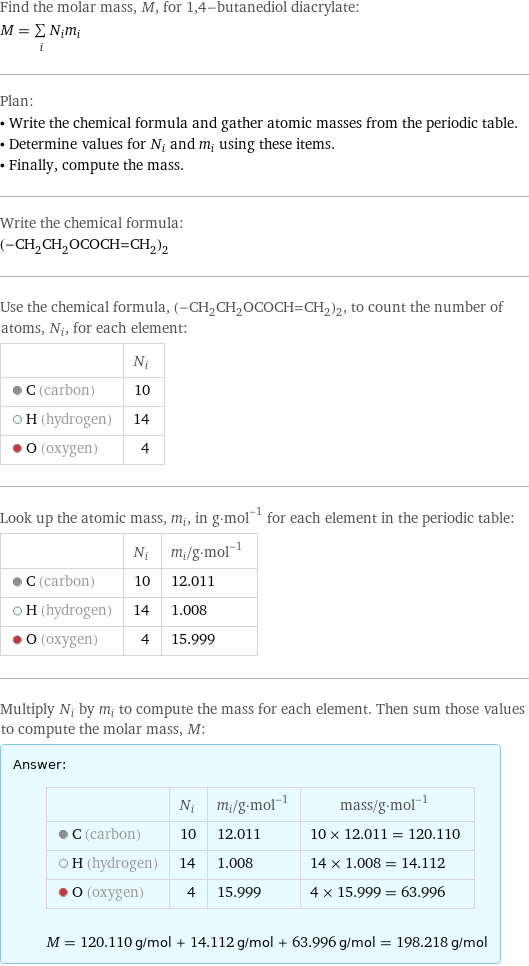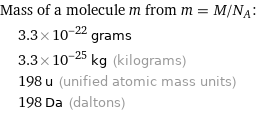Input interpretation

1, 4-butanediol diacrylate | molar mass
Result

Find the molar mass, M, for 1, 4-butanediol diacrylate: M = sum _iN_im_i Plan: • Write the chemical formula and gather atomic masses from the periodic table. • Determine values for N_i and m_i using these items. • Finally, compute the mass. Write the chemical formula: (-CH_2CH_2OCOCH=CH_2)_2 Use the chemical formula, (-CH_2CH_2OCOCH=CH_2)_2, to count the number of atoms, N_i, for each element: | N_i C (carbon) | 10 H (hydrogen) | 14 O (oxygen) | 4 Look up the atomic mass, m_i, in g·mol^(-1) for each element in the periodic table: | N_i | m_i/g·mol^(-1) C (carbon) | 10 | 12.011 H (hydrogen) | 14 | 1.008 O (oxygen) | 4 | 15.999 Multiply N_i by m_i to compute the mass for each element. Then sum those values to compute the molar mass, M: Answer: | | | N_i | m_i/g·mol^(-1) | mass/g·mol^(-1) C (carbon) | 10 | 12.011 | 10 × 12.011 = 120.110 H (hydrogen) | 14 | 1.008 | 14 × 1.008 = 14.112 O (oxygen) | 4 | 15.999 | 4 × 15.999 = 63.996 M = 120.110 g/mol + 14.112 g/mol + 63.996 g/mol = 198.218 g/mol
Unit conversion

0.19822 kg/mol (kilograms per mole)
Comparisons

≈ 0.28 × molar mass of fullerene ( ≈ 721 g/mol )

≈ molar mass of caffeine ( ≈ 194 g/mol )

≈ 3.4 × molar mass of sodium chloride ( ≈ 58 g/mol )
Corresponding quantities

Mass of a molecule m from m = M/N_A: | 3.3×10^-22 grams | 3.3×10^-25 kg (kilograms) | 198 u (unified atomic mass units) | 198 Da (daltons)

Relative molecular mass M_r from M_r = M_u/M: | 198